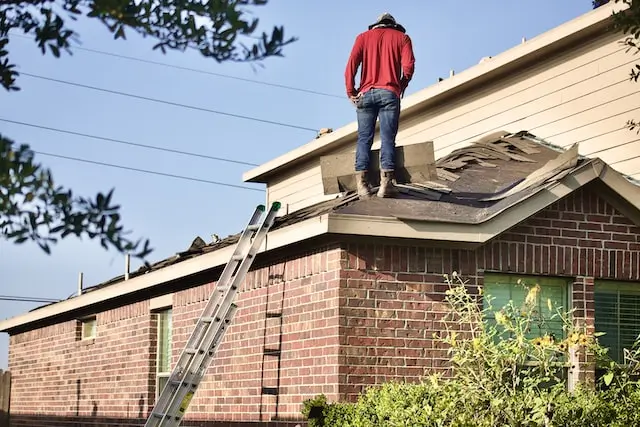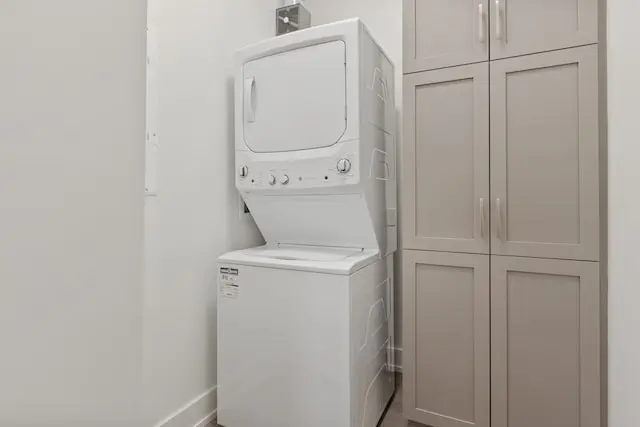Changing the air filter in the furnace twice a year, draining the water from outdoor faucets in preparation for winter, cleaning the gutters, etc., are all items that are probably already on your standard home maintenance checklist. That’s a wonderful step in the right direction, but there are always those odd things that homeowners either overlook or are unaware of. However, they are still crucial if you want your home to survive Cedar Valley weather this winter damage-free. So here’s our list of winter maintenance tasks that you shouldn’t ignore and that will help you ensure your Cedar Valley home is ready for winter.
6 winter maintenance tasks you mustn’t skip
It’s as crucial as regular upkeep, repairs, and upgrades to your property at any time of year. However, it’s even more important to do it before winter. After all, who would want to have to deal with roof issues during colder months in Cedar Valley? Always keep in mind that these winter maintenance tasks are essential to keep your home in the best shape and thus avoid potential damage and expensive repairs.
If you’re not comfortable doing these tasks on your own, you might want to hire professionals to help you. This is especially important if you’re about to move to a new home. Let’s say you’re moving to Utah from another state and looking for cross-country movers. After all, you wouldn’t want to do this without assistance from the pros. The same goes for your new home – while you’re dealing with the ins and outs of your move, you can schedule pros to take care of your home and have it wait for you, fully ready for winter.
#1 Test your sump pump
A sump pump is an often-overlooked yet crucial piece of equipment. It’s not uncommon for sump pumps to sit idle for extended periods. A sump pump is a small pump that is installed in a sealed basin on the basement floor and is only activated when water levels in the area rise.
Keep in mind that an inoperable sump pump may go undetected until it’s too late. Basement flooding and water damage may be severe by then. Having this in mind, one of the most important winter maintenance tasks is to thoroughly check the state of your sump pump. Even if you find any issues, you can quickly fix them before they turn into expensive disasters.
#2 Clean weep holes on your windows
Weep holes can be seen on the exterior of the bottom frame of many sliding windows and vinyl replacement windows. The rainwater that may collect in the frame’s bottom channel is sent out through these holes. However, insects and other debris can block weep holes, leading to water backing up in the channel and perhaps seeping into the home.
Simply spraying the exterior of the window with a garden hose or pouring a glass of water into the track can reveal whether or not the weep mechanism is functioning. If you don’t see clean water dripping from the weep hole, stick a wire hanger in there, blow some compressed air through it, and try again. The little flapper (meant to block the blustering wind) can be removed with a putty knife and replaced if it becomes stuck.
#3 Clean refrigerator coils
You can find the condenser coils in your refrigerator either across the bottom or along the rear. Dust, pet hair, and cobwebs prevent heat from escaping effectively from coils. Therefore, your refrigerator’s compressor will have to work harder and for longer than intended, increasing energy consumption and decreasing the appliance’s lifespan.
Therefore, it’s essential to check refrigerator coils and make sure they’re clean. Use a coil cleaning brush and vacuum to get the dust and debris out of the coils. A flexible coil-shaped cleaning brush (which you can find in home improvement stores or on the web) can easily reach every nook and cranny. If you don’t feel comfortable doing this by yourself, you can always browse business listings and find a great contractor.
#4 Lube springs on your garage door
It’s also important to take the time to educate yourself about garage door upkeep. Use garage door lube (you can find it in any hardware store) to cover the torsion springs that hang above the rollers. Even if every spring fails after some time due to metal fatigue and corrosion, you can extend their life by lubing them at least once a year.
Do keep in mind that spraying is likely to do some damage to the wall behind the spring. Therefore, it’s prudent to cover that area with cardboard. Roll the hinges and track in lubricant and apply it to the rollers as well. It’s as simple as that!
#5 Clean out your water heater’s sediment
Most people don’t even know that it’s crucial to annually empty water out of your heather. If you don’t do this, you can expect water leakages and your water heater to stop functioning properly. This happens because sediment eventually settles to the bottom of the tank. As a result, gas-powered heaters develop hotspots that can lead to tank damage and eventual failure.
On the other hand, when sediment accumulates in an electric water heater, it can cause the bottom heating element to malfunction. To conclude, regular draining of a water heater can reduce energy costs and increase its service life. You should do this at least once a year, so it’s a perfect task to put on your winter maintenance checklist.
#6 Clean your dryer vents
Your dryer will not operate as efficiently if the vent is blocked, and it will also pose a major health and safety risk, given that it could become a cause of a fire. Longer ducts from a dryer placed in the middle of a house are a major cause of clogs. However, lint isn’t the only thing that might cause a clog in your ducts. Bug nests and jammed exhaust hood flappers are also common culprits. You may tell your vent is not working properly when drying takes longer and smells stronger than usual.
Cleaning the dryer’s vent requires removing it from the back of the machine. You can either use a wet/dry vacuum to remove the dirt from the ducts, or you can use a cleaning kit that comes with a brush on a long flexible rod that attaches to a power drill to ream out the ducts. You can buy the kits at any home improvement store. Instead of using flexible ducts, which collect dust and debris quickly due to their rough corrugated surface, replace them with smooth metal ducts.
Wrapping up
Now that you know what winter maintenance tasks you should focus on, it’s time to roll up your sleeves and get your home ready for winter. Or, even better, you can quickly research Ceder Valley business directory and find reliable professionals to get your home ready for winter for you. You can use that time to start getting your home ready for the upcoming holiday season! Isn’t that more fun?
Some stories are best told without a name attached. Whether it’s a firsthand experience, an opinion piece, or a sensitive topic, Cedar Valley Sentinel occasionally publishes content written by anonymous contributors or ghostwriters who wish to remain unnamed. These authors may be local residents, community leaders, or subject matter experts who want to share their perspectives, insights, or concerns with the people of Eagle Mountain, Lehi, Saratoga Springs, Cedar Fort, and Fairfield — without the spotlight.
Every anonymous submission is reviewed and fact-checked by our editorial team to ensure it aligns with our commitment to accurate, community-centered reporting in Northern Utah County.




I was not aware of the need to test weep holes in the exterior windows. Thanks for teaching me something new.
Brett Wright, Weep holes are small openings in the exterior window frames that allow moisture to escape from the window and prevent water damage. They should be checked regularly to make sure they are not clogged with debris or blocked by paint, caulk, or other materials. If weep holes are not functioning properly, it can lead to water damage and mold growth in the walls and floors of a home.
Debug: 23:77:100:645